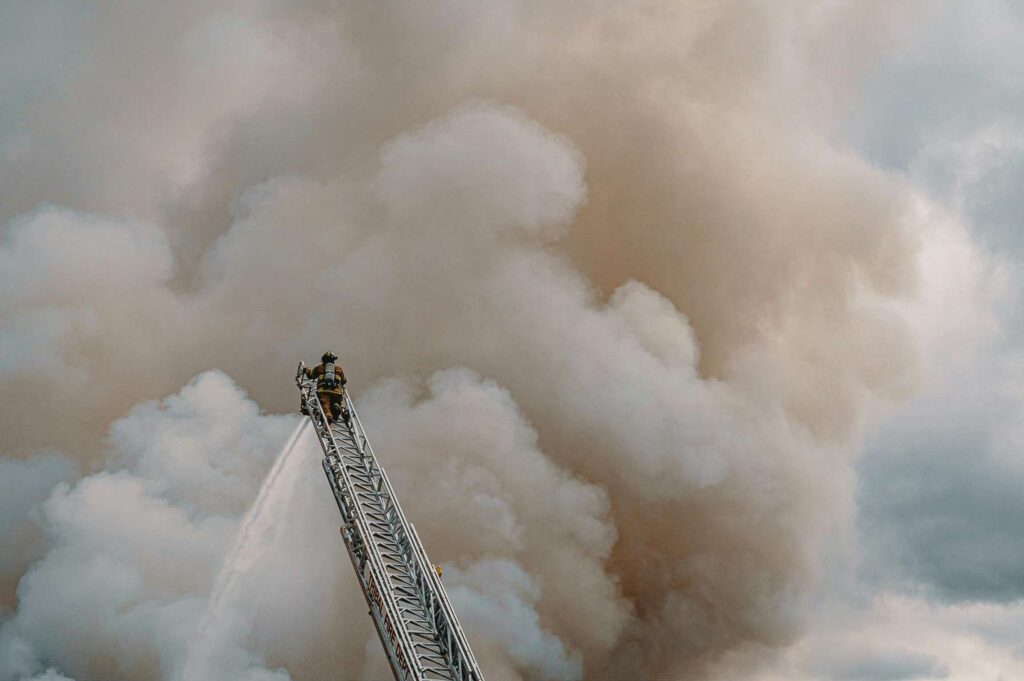
Table of Contents
For decades, the firefighting foam known as Aqueous Film-Forming Foam (AFFF) has been hailed for its effectiveness in extinguishing petroleum-based fires. However, recent years revealed AFFF contains per- and polyfluoroalkyl substances (PFAS), synthetic chemicals persisting in the environment and harmful to health. This revelation is troubling due to the persistent nature of PFAS and its potential health risks.
This realization has sparked a national conversation about the environmental and social costs associated with this contamination.
In this article, we explore the challenges posed by AFFF contamination and examine potential solutions through the lens of environmental justice.
Challenges in Achieving Environmental Justice
Achieving environmental justice confronts hurdles like pollution disproportionately affecting marginalized communities, lax regulation enforcement, and the necessity for inclusive decision-making. These challenges highlight systemic inequities that must be addressed comprehensively for meaningful progress.
Inclusive processes can ensure fairness and accountability in environmental policy and action.
Lack of Awareness and Information Dissemination
A significant challenge in addressing AFFF contamination lies in the lack of public awareness about the issue. AgriLife Today highlighted Texas A&M AgriLife scientists’ pioneering study on public awareness of PFAS in the United States.
Findings revealed significant gaps in knowledge, with 45.1% of respondents unaware of PFAS and 31.6% familiar with the term but lacking understanding. Surprisingly, 97.4% expressed disbelief that PFAS had impacted their drinking water.
This knowledge gap hinders community preparedness and advocacy efforts. Also, inconsistent communication from local authorities and a lack of readily available information can exacerbate anxieties and leave residents feeling powerless.
Also Read: Reporting at Scale: How To Create a Framework for Scalable Reporting?
Legal Barriers and Complexities in AFFF Lawsuits
Litigation serves as a potent means of holding AFFF manufacturers accountable and obtaining compensation for affected individuals. However, the legal terrain of these lawsuits is fraught with substantial hurdles and complexities, posing formidable challenges to achieving justice. These complexities can create hurdles to achieving environmental justice.
Establishing causation in these lawsuits is challenging due to the long latency period of PFAS-related illnesses and exposure from multiple sources. Scientific uncertainties surrounding PFAS health effects can further complicate cases, delaying definitive conclusions.
Also, class certification in these lawsuits requires demonstrating common questions of fact and law among plaintiffs, adding complexity to the legal process.
Governmental immunity shields governments in some contamination cases, frustrating affected communities near military bases or government sites. Also, filing a successful AFFF lawsuit is financially burdensome due to resource disparities.
The high costs of scientific experts, medical records retrieval, and legal representation pose significant challenges, particularly for plaintiffs from low-income areas.
Despite challenges, TorHoerman Law reports over 500 new filings in the AFFF litigation in February 2024, indicating ongoing legal activity. This surge underscores the continuing significance and scope of AFFF contamination concerns. It highlights the persistence of legal efforts in addressing this issue.
Economic Disparities and Access to Legal Recourse
Economic disparities worsen challenges for AFFF-affected communities, hindering their legal recourse. Residents in low-income areas may lack funds for legal representation or lengthy litigation against corporate entities. Limited financial means impede access to justice in addressing the contamination.
The University of Rhode Island states that the STEEP program’s study was the first to assess PFAS impact from this perspective. The analysis revealed that marginalized communities bear a disproportionate burden of PFAS contamination.
Specifically, residents in rural areas below the poverty line had a 10% higher chance of detecting PFAS in their water.
This data underscores the urgent need for targeted interventions and equitable solutions to address the environmental injustices faced by these communities. By centering the voices and needs of marginalized populations, policymakers can work towards a more just and sustainable future.
Political and Regulatory Challenges
Political and regulatory hurdles complicate efforts to address AFFF contamination, impeding progress toward environmental justice. The influence of vested interests and lobbying efforts often dilutes regulatory measures aimed at curbing firefighting foam use and mitigating its impacts.
Also, fragmented regulatory frameworks across jurisdictions hinder cohesive approaches to tackling the contamination, leading to inconsistencies in monitoring, remediation, and accountability.
Addressing challenges demands political will, transparent governance, and stronger regulations prioritizing public health and the environment over corporate interests. Only through concerted efforts policymakers can enact meaningful reforms to address relevant contamination and advance environmental justice for affected communities.
Environmental Racism and Disproportionate Impact on Marginalized Communities
The burden of AFFF contamination does not fall equally on all communities. Environmental racism often locates low-income and communities of color near industrial sites and military bases, exacerbating AFFF contamination risks. These same communities may also have fewer resources to advocate for themselves or relocate when faced with contamination.
This environmental injustice underscores the need for policies that prioritize the health and safety of all residents, regardless of race or socioeconomic background.
Solutions to Address Environmental Justice
Achieving environmental justice in the face of AFFF contamination requires a multifaceted approach. Key solutions to address the contamination include community engagement and education initiatives to raise awareness about PFAS exposure and health risks. Educational campaigns and outreach programs empower residents to participate in decision-making.
Also, remediation efforts and infrastructure investments are vital for cleaning up contaminated water and soil. Investing in proven technologies to remove PFAS from contaminated water supplies and soil is crucial.
A study by the Environmental Protection Agency found that granular activated carbon filtration can effectively reduce PFAS levels in drinking water.
Stronger regulations on PFAS production, use, and disposal are vital to prevent future contamination. Holding manufacturers accountable and establishing clear safety standards are key steps towards environmental justice.
Environmental Justice Initiatives
A burgeoning array of environmental justice initiatives is emerging to address the inequities stemming from AFFF contamination. Community groups lead efforts to amplify affected voices, push for policy reforms, and implement grassroots solutions in environmental justice.
Also, collaborative partnerships between academia, government, and communities foster innovative solutions for AFFF pollution and environmental justice. Initiatives prioritize community engagement and equitable decision-making processes. Culturally competent interventions address contamination’s disparate impacts on marginalized communities.
Future Outlook and Recommendations
Moving forward, adopting proactive measures is essential for advancing environmental justice post-AFFF contamination. Community-centered approaches and transparent governance are crucial. Robust regulatory enforcement is vital in preventing future contamination and addressing existing injustices.
Recommendations encompass implementing stricter regulations, allocating resources for monitoring and remediation, and prioritizing community health in policymaking. Also, interdisciplinary collaboration, environmental education promotion, and equitable legal access are crucial for addressing systemic injustices post-AFFF contamination, fostering a just and sustainable future.
Frequently Asked Questions
What are the primary challenges faced by communities affected by AFFF contamination?
Communities affected by AFFF contamination face challenges like limited access to legal recourse due to economic disparities and governmental immunity. Also, environmental racism exacerbates the burden on marginalized communities, compounding the difficulties in seeking justice.
How can individuals and communities advocate for environmental justice amidst AFFF lawsuits?
While AFFF lawsuits hold manufacturers accountable, individual and community action is vital for environmental justice. Residents can raise awareness through public forums and social media. Working with local organizations can amplify their voice and push for stricter regulations.
What role do government agencies and regulatory bodies play in addressing AFFF contamination?
Government agencies and regulatory bodies play a critical role in addressing AFFF contamination. They can establish safety standards for PFAS in drinking water and soil, oversee cleanup efforts, and hold polluters accountable. Also, they can fund research on the health effects of PFAS and develop educational programs to raise public awareness.
Also Read: How To Design Engaging Donut Charts?
Paving the Path Towards Environmental Equity
The pursuit of environmental justice amidst AFFF contamination is both a moral imperative and a practical necessity. Addressing the enduring pollution legacy demands concerted action and unwavering commitment to equity. Communities affected by disproportionate impacts must be central to this collective effort.
Grassroots activism, policy reform, and partnerships pave the path to addressing past injustices and preventing future harm. Centering affected communities’ voices, advocating for robust regulations, and fostering inclusive decision-making ensure environmental justice becomes a reality.



